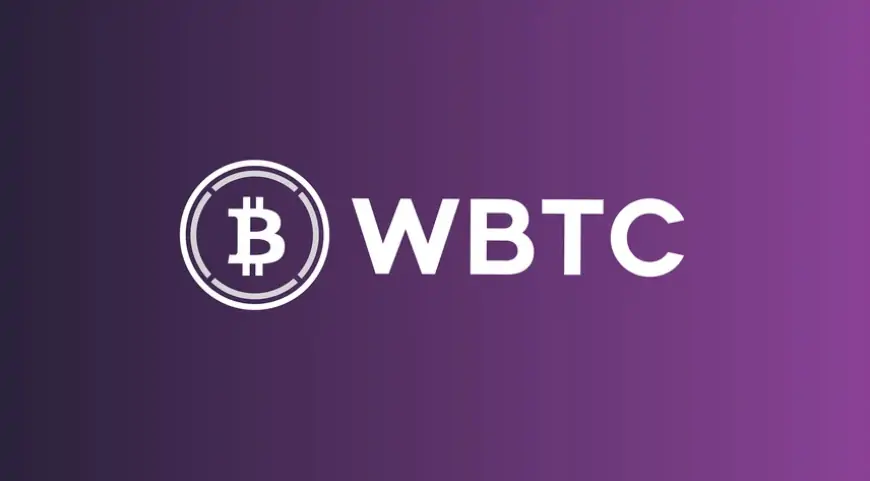What is Wrapped Bitcoin (wBTC) and how does it work? Definition from Digimagg
Wrapped Bitcoin (wBTC) is a tokenized version of Bitcoin that can be used on the Ethereum blockchain. Learn how it works and its benefits.

What is Wrapped Bitcoin (wBTC)?
Wrapped Bitcoin (wBTC) is a token that mirrors the value of Bitcoin (BTC) and is compatible with decentralized applications on the Ethereum network. Launched in 2019, wBTC maintains a one-to-one value with Bitcoin, tracking its real-time value accurately.
Bitcoin and Ethereum operate on different protocols, making their blockchains incompatible. Wrapped Bitcoin addresses this by allowing BTC holders to "wrap" their Bitcoin, creating a token that adheres to Ethereum's protocol. This enables cross-chain communication and transactions between Bitcoin and Ethereum networks.
How does it work?
Wrapped Bitcoin enables Ethereum blockchain applications and smart contracts to interact with Bitcoin-backed cryptocurrency. When users swap BTC for wBTC, the original Bitcoin is secured in a digital vault, and an equivalent amount of wBTC is issued to the user.
wBTC is redeemable at a one-to-one ratio with BTC, allowing users to wrap or unwrap Bitcoin at their discretion. However, exchanges typically charge a small fee for these transactions, so it's advisable to check the fee before proceeding.
"Wrapping" Bitcoin or any other cryptocurrency involves making it compatible with ERC-20 tokens that operate on the Ethereum blockchain network.
What are ERC-20 tokens?
ERC-20 tokens, short for Ethereum Request for Comment 20 tokens, are interchangeable tokens on the Ethereum blockchain. Unlike non-fungible tokens (NFTs), which represent unique assets, ERC-20 tokens are standardized to be indistinguishable from each other.
ERC-20 sets the standard for creating these tokens, ensuring they can transact seamlessly with one another. Tokens adhering to this standard must meet specific requirements regarding transaction approval, token transfer, and smart contract usage.
While Ether (ETH) is Ethereum's native coin, it is not ERC-20-compatible, meaning it cannot directly interact with other ERC-20 tokens on the Ethereum network. Wrapped Ether (wETH) was developed as a solution, allowing ETH holders to engage in direct transactions with ERC-20 tokens on the network.
What are the uses of Wrapped Bitcoin?
- Staking: Unlike proof-of-stake networks, proof-of-work cryptocurrencies like Bitcoin typically do not support staking, a method for investors to earn rewards by securing a network. However, after Ethereum transitioned to proof of stake in September 2022, known as "the merge," investors holding BTC can now stake their wBTC on the Ethereum network to earn passive income in the cryptocurrency market.
- Utilizing decentralized finance (DeFi) products: Another use for wrapped Bitcoin is engaging with decentralized finance products. This includes activities like borrowing, lending, and swapping wBTC for other ERC-20 tokens on DeFi platforms such as Uniswap or MakerDAO on the Ethereum network.
Is wrapping Bitcoin considered a taxable event?
The tax treatment of wrapping coins like Bitcoin, known as wrapped Bitcoin, remains uncertain as the IRS has not provided clear guidance on the matter. However, taking a conservative approach, one might consider moving Bitcoin to wrapped Bitcoin as a taxable event, akin to trading one virtual currency for another.
How to buy Wrapped Bitcoin?
There are several methods to obtain wrapped Bitcoin:
- Purchase it directly from a cryptocurrency exchange: You can acquire wrapped Bitcoin on a cryptocurrency exchange that supports it. To do so, you must first verify that the exchange supports wrapped Bitcoin and then create an account. After creating your account, you can deposit funds using various methods such as ACH transfers, wire transfers, or debit cards.
- Use caution when using a credit card: While some exchanges allow you to use a credit card to fund your account, this method can be risky. Borrowing money to invest in highly volatile assets is generally not advisable. Furthermore, many banks consider credit card deposits to a crypto exchange as cash advances, which often incur a fee of 3% to 5%. If you cannot repay the debt immediately, cash advances typically accrue interest charges. Consequently, if the cryptocurrency's value decreases, you may end up paying high interest rates, sometimes exceeding 20%, on an asset that is no longer worth its original purchase price.
After funding your account, place an order for the desired amount of wBTC and finalize the purchase. If you intend to hold onto your wBTC for an extended period, consider transferring the funds to a separate crypto wallet for added security. This precaution can safeguard your assets in the event that the exchange where you purchased them declares bankruptcy or experiences a security breach, as occurred with FTX and BlockFi. However, using a wallet does not protect you from crypto's volatility.
Exchange another cryptocurrency for wBTC
If you already possess some cryptocurrency, verify if it is ERC-20 compatible. If it is, you should be able to exchange your existing crypto for wBTC tokens, provided that the exchange you are using supports wBTC.
Convert Bitcoin you already own
If you already hold Bitcoin, you can exchange it for wBTC. Typically, you will need to pay a small fee to an exchange to facilitate the wrapping or unwrapping of your BTC.












































